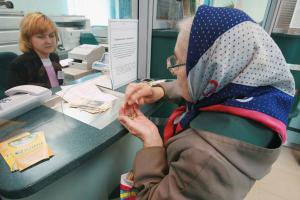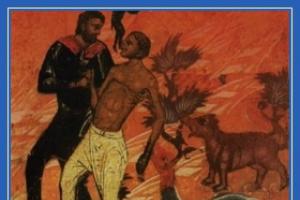This invigorating drink, without which many people cannot imagine starting their day, is beautiful in its versatility. The bouquet of high-quality coffee, regardless of its type, combines different notes, which give it a unique taste.
In this article, we will discuss Arabica and Robusta in detail. Let us tell you what characteristics each of these varieties has, and which one has more pronounced acidity. We invite everyone who wants to understand this issue to read it.
Let's start with the main thing. So, which coffee is sour - Arabica or Robusta:
- It is necessary to understand that the taste properties of each variety are determined by its growing conditions. Arabica plantations are usually located in hilly or mountainous areas. The climate in the regions where it is grown is tropical. And, as you know, all tropical fruits are, to one degree or another, characterized by sourness in taste. The higher the plantation is located above sea level, the more pronounced the acidity will be. Therefore, Arabica beans grown at an altitude of 800 meters will not have as sour a taste as those grown high in the mountains.
- Another criterion that affects the intensity of sourness is the method of processing the grains. Many gourmets prefer washed Arabica coffee. However, it should be understood that washed processing also affects the taste in a certain way. Namely, it increases acid levels
As for robusta, it is characterized by a completely different palette of taste. The composition of such a drink usually exhibits bitterness. But robusta is rightly considered the stronger of the two types, which is due to its higher caffeine content. Therefore, it is often used to form mixtures for making espresso.
Let’s summarize the answer to the question of which coffee sours Arabica or Robusta:
- The first variety is characterized by a more multifaceted and refined taste. But at the same time, Arabica has a more pronounced acidity compared to Robusta.
- This criterion is determined by the characteristics of the area in which the coffee plantations grow. In addition, the method in which the grains were initially processed also matters. (washed processing contributes to some increase in acidity in the taste of the drink)
When discussing the question of which sour coffee is Arabica or Robusta, one cannot help but note the fundamental differences between the two varieties:
- The first type is much more capricious and more difficult to grow. To obtain good harvest from the Arabica tree, people have to work hard. This variety is very demanding on climatic conditions, does not tolerate temperature fluctuations, and is susceptible to insect pests.
- But robusta plantations, which, by the way, grow in lowlands or on small slopes, at an altitude of 0 to 800 meters, are much more unpretentious. It’s not for nothing that this type of coffee was given exactly this name. (translated from English "robust" means strong, strong and firm)
There are differences in the shape of the grains of both types. Arabica coffee is characterized by a larger and elongated shape. As for Robusta, it is characterized by a smaller and rounder shape of coffee beans.
Another difference is that Arabica is a shorter plant. Some of its species even resemble a bush. But a robusta tree can even be six meters tall.
.jpg)
Continuing to expand on the question of which coffee sours Arabica or Robusta, we want to pay attention to roasting:
- Roasting is a heat treatment, under the influence of which coffee beans reveal all facets of their taste
- Theoretically, frying can be done at home, but this procedure still requires a certain skill. To maintain the necessary balance And open all notes, processing should be carried out by a specialist with experience

The weaker (lighter) roasting, the more sour the drink will taste. Here's a stronger one (dark) Heat treatment promotes the development of bitterness. Note that bitter notes are not caused by a high caffeine content, as many people mistakenly think, but by the presence of antioxidants.
If the balance is not maintained during roasting, the composition may turn out to be either overly sour or, on the contrary, too tart and bitter.
Roastnmill is a highly professional coffee roasting service that guarantees an impeccable taste.
An important bonus: heat treatment is always performed in small portions, only individually - in accordance with the taste preferences of each specific customer.
We do not roast for future use. Roastnmill is exclusively fresh live coffee. It is distinguished by a charming aroma that can impress the most sophisticated gourmets.
Of course, Arabica has many different subspecies - and each of them is characterized by its own level of acidity.
Thus, one of the most acidic varieties known today is Yirgachif from Ethiopia. This coffee is not very strong, so some baristas add a little Robusta to increase the caffeine level. But it has an exquisite and multifaceted flavor and aroma bouquet: shimmering with notes of cherry, black currant, noble red wine and citrus fruits. Its enchanting aroma gives a boost of energy, lifts your spirits and puts you in a business-like mood.
In general, the acidity in coffee can be different: citrus, floral and even with a nutty flavor - such as in Arabica beans from Nicaragua.
But Robusta cannot have pronounced acidity. It is characterized by more earthy and bitter notes, and therefore in most cases is used to increase the strength of the drink.

Now you know which sour coffee is Arabica or Robusta - and you can make your choice. Finally, a few cooking tips:
- If you cook an invigorating elixir in a Turk, do it over the lowest heat. Otherwise, the contents of the container will either burn or run onto the stove.
- Remove the Turk from the heat as soon as the formed foam begins to rise. Do not let the drink boil, otherwise the essential oils will evaporate and the composition will not be as fragrant
- To reduce the strength, you can add a couple of cardamom grains and a piece of butter to the Turk: just a little bit, literally on the tip of a knife
- Grapefruit juice will help add refreshing notes to the composition and increase its invigorating properties.
- Add spices whole (eg cinnamon stick) needed during cooking. And in powder form - when the invigorating elixir is already ready and poured into cups

The Roastnmill online store offers wide choose varieties of selected bean coffee. You can order a single variety or create an individual blend, including Robusta with Arabica. You can customize your individual flavor profile by adjusting the roast intensity.
We deliver orders to your home. Delivery is carried out within 12-72 hours after roasting. This allows you to maintain maximum freshness of the product - so that you can fully enjoy every sip of the invigorating elixir and feel the unique bouquet of coffee notes.
Video
The difference between Arabica and Robusta is primarily determined not so much taste qualities, the peculiarities of their cultivation. Arabica is an extremely demanding tree that loves warm climates and cannot withstand sudden fluctuations in weather conditions. In addition, it is very susceptible to various diseases, so it is difficult to grow. All these factors together influence the cost of Arabica coffee beans, which are more expensive than Robusta beans.
Many coffee lovers appreciate Robusta for its high content caffeine, as well as for the unusual, slightly bitter and astringent taste of this variety.
Robusta is less demanding on the conditions in which it is grown. This tree is quite tenacious, resistant to diseases and cold climates. In addition, Robusta begins to bear fruit much faster and produces a yield that is significantly higher than that of Arabica. Thanks to this, grains of this variety are cheaper, which makes them more popular among those on a modest budget.
Arabica and Robusta flavors
The taste of Arabica is also quite different from the same quality of Robusta - it is richer, but it does not taste bitter or dry out the tongue like its competitor. The soft rich taste of Arabica and its intense aroma are formed from ninety different essential oils, and the less concentrated content makes the drink from it softer and more pleasant.
One hundred percent Arabica is the most expensive type of coffee, and Robusta in its pure form is very difficult to find on the open market.
The taste difference between Robusta and Arabica is the presence of bitterness and a stronger astringent taste, since Robusta beans contain three times more caffeine than Arabica beans. Lovers of very strong coffee prefer this particular variety, whose invigorating qualities more than compensate for its taste. The aroma of Robusta is formed from only four types of essential oils, but it is hardly possible to call it poor.
Robusta is mainly used by mixing it with Arabica, which makes coffee more inexpensive. This mixture is not particularly inferior to the pure second variety in terms of richness and aroma, but at the same time it is stronger and cheaper. Also, Robusta, unlike Arabica, retains most their substances. It is often used to obtain fluffy foam when preparing espresso coffee.
Coffee lovers can distinguish one type from another not just by taste, but even by smell. And for those who are just beginning to be interested in this drink, it can be difficult to make a choice. The most popular are Arabica and Robusta, but they are radically different, so they are suitable for people with completely different needs.
Taste
At first glance, Arabica and Robusta are quite close relatives, they even belong to the same Marenov familyAroma
The smell of Arabica is considered a reference. It is soft, pleasant and has several shades. Robusta smells simpler and not so strong. This is due to the lower concentration of essential oils in this type of coffee beans.
Chemical composition of grains
 Arabica beans produce a drink that is less strong, with a rich taste and aroma. Robusta gives a sharp, bitter, but very invigorating infusion with a faint odor
Arabica beans produce a drink that is less strong, with a rich taste and aroma. Robusta gives a sharp, bitter, but very invigorating infusion with a faint odor Arabica beans contain a large number of essential oils. The percentage of their content reaches 18%. And only 1.5%. After roasting, the grains are valuable for vitamin PP. Arabica also contains lipids, proteins and sugars.
Robusta is translated as “strong”, since the concentration of caffeine in it is 2 times higher than in Arabica - 3%. And there are only 8% essential oils, which explains the lack of a strong smell and taste. Roasting the beans before preparing the drink softens the bitterness slightly. A high concentration of caffeine gives a good invigorating effect, and the tart taste stimulates the receptors. As a result, a person feels less tired, so this drink is usually consumed in the morning.
Popular varieties
 Arabica requires cross-pollination, hence the rapidity of infection and mutation
Arabica requires cross-pollination, hence the rapidity of infection and mutation Arabica may be mistakenly called a coffee variety. But in fact it is a type of plant. And the most popular varieties of coffee made from it include:
- Bourbon;
- Shinzan;
- Maragogyp;
- Typica;
- Bali;
- Katura;
- Aramosa.
Each variety has a characteristic taste and aroma. Arabica is very common and is considered a classic coffee, which is why there are so many varieties. There are significantly fewer varieties of Robusta:
- Conillon du Brazil (characteristic earthy flavor);
- Ambry (classic variety);
- Quilu (more often used in mixtures than solo).
Each variety was grown for its own purpose. Some reveal the taste of the drink better, while others grow and ripen faster. There are more varieties of Arabica, but Robusta also has plenty to choose from.
When is it open?
 Whether it is South America or Africa, Arabica from these places turns out to be unique, with a flavor palette inherent only to a specific region. The birthplace of robusta is Africa, first discovered in the floodplain of the Congo River
Whether it is South America or Africa, Arabica from these places turns out to be unique, with a flavor palette inherent only to a specific region. The birthplace of robusta is Africa, first discovered in the floodplain of the Congo River Arabica has been known to people since the 14th century. Since then, a large number of varieties and methods of roasting beans have appeared. But the classic taste of coffee has not changed since then.
Robusta was classified as a separate species only at the end of the 19th century. Before this, it was not drunk separately, but only mixed with others, so there was no need for identification. But now this type is highly valued by true lovers of strong coffee.
Where are you from?
Arabica was first harvested in Ethiopia. Robusta originates from Central Africa. The difference in climate affected the taste of the drink and the appearance of the plant.
Where does it grow
 Farmers believe that the future lies in combining the qualities of Arabica and Robusta in new varieties
Farmers believe that the future lies in combining the qualities of Arabica and Robusta in new varieties Mountain areas are better suited for cultivating Arabica. Optimal height above sea level for this plant is 600-2000 m. Arabica does not like heat, optimal temperature for growth and maturation - from 15 to 24°C. Precipitation should be from 1200 to 2000 mm per year. If there are more of them, the tree may begin to rot.
Robusta trees prefer foothills and flat terrain. Robusta does not like heights too much; it is grown on land up to 800 m above the sea. But this plant requires heat and moisture. The tree grows best at temperatures from 16 to 36°C, and requires a rainfall of 2000 to 3000 mm. If climatic conditions do not meet the norm, the plant will dry out and die.
Appearance of grains
 Collected and cleaned, Arabica and Robusta beans have pronounced external differences
Collected and cleaned, Arabica and Robusta beans have pronounced external differences Arabica and Robusta beans differ significantly in appearance. In the first species they reach up to 8 mm and have an oval shape. After roasting, the beans have an even brown color.
The shape of the Robusta grain is closer to a circle. They are smaller in size than Arabica beans. After roasting, the color of the beans does not become uniform; they can have several shades of brown.
Genetics
The number of chromosomes varies not only in animals, but also in plants. Arabica has 44 of them, which determines the variety of tastes of its varieties. Robusta has only 22 chromosomes. Therefore, its taste and aroma are not multi-layered, because each gene encodes a specific trait. The fewer there are, the lower the level of variability, which means fewer varieties can be withdrawn.
Plant size
 Today's breeding experiments are more aimed at increasing yields and reducing the risks of growing coffee, which is why many newly bred Arabica varieties, although they bring more harvest, but the taste is inferior to its predecessors
Today's breeding experiments are more aimed at increasing yields and reducing the risks of growing coffee, which is why many newly bred Arabica varieties, although they bring more harvest, but the taste is inferior to its predecessors Since Arabica grows in high mountain areas, it has a short trunk height. Maximum size tree is 5 m. In conditions of low precipitation and low temperatures, it is simply irrational to grow higher; the plant will not have enough nutrients.
Robusta grows in flat areas, so the tree can reach 10-12 m. Climatic conditions with high rainfall do not limit the plant in nutrients and water. And the distance from the sun's rays provokes the tree to grow in height. Therefore, Robusta is almost 2 times higher than Arabica.
whimsicality
 Robusta's stability is largely due to self-pollination, hence its good resistance to external influences.
Robusta's stability is largely due to self-pollination, hence its good resistance to external influences.
Arabica is undeniably popular among coffee types. It accounts for 70% of all grains sold. Robusta is less known as a separate species. But most instant coffee is made from it. It is also added to other varieties to increase the caffeine content and give the drink strength.
Usage
 Robusta has a much higher content of tannins, which are responsible for bitterness, than Arabica.
Robusta has a much higher content of tannins, which are responsible for bitterness, than Arabica. Arabica and Robusta differ in purpose. The first type is used in its pure form; an aromatic, weak drink is prepared from it. And the second is suitable for espresso, as it has a powerful invigorating effect. It is also added to mixtures for making coffee, and is also used as a basis for creating instant drinks. Robusta is drunk in its pure form only by true connoisseurs who like its bitterness and tart taste.
Cost of Arabica and Robusta
 Arabica is more expensive than robusta due to the greater risks and costs of cultivation
Arabica is more expensive than robusta due to the greater risks and costs of cultivation The price of Arabica is usually higher than that of Robusta. This is due to the peculiarities of growing the species, as well as its taste characteristics. But there are also expensive, rare varieties of Robusta. Although the average cost of this type is several times lower compared to Arabica. This is explained by the low taste qualities of robusta and the unpretentiousness of the tree to external conditions.
Arabica and Robusta are different types coffee, each of which includes several varieties. They are completely different in taste, and their climatic and geographical conditions are completely different. Therefore, it is not difficult to make a choice between Arabica and Robusta, you just need to try them.
Famous brands make their products from these two types of coffee: , about which you can learn a lot of interesting and useful information on our website.
Ola, my dear readers! Now you're thinking, why am I saying hello in Portuguese? It's simple, today's topic of my blog is coffee. Who doesn’t like to drink a cup of this aromatic and at the same time invigorating liquid, especially in the morning?
Our own brand of aromatic drug
Today, there are more and more coffee lovers around the world. And this is not surprising, to wake up in the morning and at least somehow set your brain to work, coffee is simply necessary. Here lies the main secret of this enchanting drink, we get used to it too quickly, and all this is due to the caffeine included in coffee. It is this that is addictive, such a weak drug.
What coffee drink do each of you prefer? After all, there are many varieties:
- Pure black coffee;
- Coffee with milk and sugar;
- Late;
- Cappuccino.
The taste and color and as they say there are no comrades. But what makes each of these options special? To understand this, it is worth studying the composition and method of preparation of any of the listed drinks.
The first thing every coffee lover and connoisseur needs to know is that there are two main varieties from which this drink of the gods is made. Arabica and robusta are the ones that are grown on an industrial scale for subsequent sale.
But many people don’t know why one variety is different from another. So it’s my duty to clarify the question: Rabusta and Arabica are there differences in taste and other characteristics, do they exist and what are they?

A little history
Coffee itself was first brought from Africa. Nowadays coffee from the Congo is considered very popular. There is no documentary evidence of this, but there are many legends. I will describe one of them later. The first evidence of the appearance of coffee was in Ethiopia, and from there it began to travel to eastern countries.
We won’t go too deep into history. It is important to know that Arabica was the first type of coffee to be drunk as a gourmet drink. Not everyone could afford it, so coffee lovers were mainly from the elite society. Arabica has always been valued for its multifaceted taste.
There are many coffee flavors on the modern market, but the most sophisticated and expensive are:
- Brazilian coffee is considered the best in the world– Burban Santas. Its eliteness lies in the fact that it is prepared only from grains collected in the first three years of the harvest. At this time it is considered the most delicious.
- Maragogyp- this variety is grown in a town with the same name, located in South America;
- Balinese Minzan- this is an Indian variety, its uniqueness lies in its taste, this coffee has a clove aroma, a taste of Jamaican pepper and sweet persimmon;
- Topeka- This is exclusively highland coffee growing on Ethiopian plantations and Latin America. The yield of this coffee is low, and therefore its price is correspondingly high; But not as high as .
- Katura– High quality Brazilian hybrid with citrus taste;
- If you are attracted by strong aromatic coffee, then you should choose Venezuelan Caracas;
- Another Indian variety Plantation A, its taste is reminiscent of dark chocolate, seasoned with aromatic spices.
Robusta as a variety was discovered much later.
Its differences from Arabica are as follows:
- The price is much lower. True, there are varieties of Robusta that are in no way inferior in price to Arabica;
- Appearance of grains;
- The yield volume is much higher;
- Unpretentious to weather conditions during the growth period. Resistant to various kinds pests.
These are perhaps its main advantages. Of course, there are also disadvantages, which is why coffee gourmets consider Robusta to be a lower grade.

Which is better Robusta or Arabica?
Technically, these two types of coffee are like cousins In general, there are about 80 species in the world. So what is the difference between Arabica and Robusta, let's look at each separately.
Arabica
An extremely fastidious tree, it does not like sudden changes in temperature, a maximum of -15 degrees; if it falls below, the tree will freeze. It grows only on high-mountain plantations in tropical climates, at an altitude of 1000 meters above sea level.

It loves heavy rainfall; its lack can affect the quality and, most importantly, the taste of the finished coffee.
The fruit ripening period is about 9 months; due to the low yield, it has a high price, especially in its pure form. Out of five kg. When the coffee beans are ripe, only 1 kg of finished coffee beans comes out. The low plant begins to bear fruit only in the third year of life, so the best and most aromatic coffee is produced in the first few years.
If we consider the chemical composition of Arabica:
- Aromatic oils – 18%;
- Caffeine – 1.5%;
- Proteins fats carbohydrates;
- Roasted grains contain vitamin PP
This coffee is valued for its aroma and pleasant taste; if you prefer strength, then you should choose Robusta.
Robusta
This coffee is considered low grade due to its taste. Robusta what is it? From Latin it means strong. And it’s not for nothing that this type of coffee has a high survival rate even in the most unsuitable conditions.

Plus, if you develop robusta production, significantly less costs will be required, and thanks to high yield the ability to select only the best grains.
Despite a lot of advantages, the world production of this type of coffee is low, compared to Arabica coffee, only 20% versus 80%. Some people are interested in knowing where the stress is in the word robusta. I answer, the emphasis falls on the letter “U”.
Differences between Arabica and Robusta
The main difference is the taste. Robusta contains twice as much caffeine as Arabica, but because of this it has a bitter taste and does not have that unique aroma.
Just don’t write off robusta, if you want to know, it is found in absolutely all brands of instant coffee. And it is often mixed with Arabica, especially for coffee machines, so that your cappuccino and espresso have a good, stable crema.
When purchasing coffee beans, you can appearance determine where the Arabica is. Its grains are longer and the line in the middle is uneven. Robusta has small grains, round fora with a straight line in the center.
Answering the question, Robusta or Arabica - which is better? I will say that the main thing here is your preferences. Which coffee do you like more, with a bright rich aroma or a strong astringent taste? For my taste, a perfectly harmonious combination of both varieties. In fact, this is what most famous Italian coffee shops do.
Although Italian coffee is considered the most delicious, this is due to the recipe, which is jealously guarded by professional baristas. Take at least famous brand Lavazza coffee. This Italian coffee brand has a rich history and a huge following.

Lavazza tastes quite tart with a pronounced bitterness, while it has a bright aroma that perfectly adds vigor in the morning. But doctors don’t recommend drinking coffee in the morning, it’s an extra burden on your heart.
And here is a photo of both varieties and how to distinguish them by appearance

To become a professional coffee connoisseur, you need to try so many varieties that many simply don’t have enough money. On the other hand, why get hung up on what beans your favorite coffee is made from, the main thing is its unique taste.
The legend about coffee
And now it's time for the coffee legend. So, a long time ago in a distant African country, where eternal summer reigns, and people do not need to work hard to get food and build reliable and warm homes. A tribe lived near a small jungle.
His main craft was hunting and gathering edible berries and roots. Like every tribe, there was a wise shaman, to whom the secrets of the universe were revealed, and without whose advice not a single resident left the village.
One day, sitting by a sacred fire, thinking about pressing issues, the shaman decided to ask the spirits. How can the tribe achieve even greater prosperity? And the spirits gave an answer, they said to gather the best warriors of the tribe and send them to the other side of the jungle. There are special fruits there, they said. By collecting them, you can achieve what you want.
Of course, the shaman told this at the general gathering of the tribe, and it was decided to send five of the best warriors in search of these fruits. The war was absent for several months and the residents began to think that they would never return.
Suddenly the warriors appeared, but instead of the expected unusual fruits, they brought a handful of some small berry-like beans. The shaman saw this and became angry and threw the fruits into the fire.
And then, unexpectedly for everyone, a wonderful aroma came out of the fire, so tasty that the residents at first did not understand where it was coming from, and when they figured it out, they decided to try to fry the fruits brought in a separate bowl.
Secondly, why send soldiers to search, of course, they don’t ask unnecessary questions, but in vain, they had to drag the shaman himself with him so that he wouldn’t make a claim later.
And thirdly, everything that is not done is for the better. Well, they didn’t bring what they needed, but they found it new way how to occupy free time.
Thank you for your questions, I really value your opinion, dear subscribers! Share new articles with your friends and subscribe to mine. See you.
Text— Agent Q.
In contact with
Arabica and Robusta are two types of coffee that are grown commercially. Besides them, there are others, but their volumes of all coffee in the world do not exceed two percent. For example, Liberica, Excelsa and Eugenioides.
Of the total production of Arabica and Robusta, Arabica is approximately 70%, Robusta is 30%. There are many reasons for the popularity of Arabica. The main thing is that Arabica simply tastes better. But it is interesting that these two plants are relatives. More precisely, Arabica appeared thanks to the crossing of Robusta and Eugenioides.
Eugenioides is very rare view coffee that grows on small bushes. Its grains are very small and the yield is low, so it cannot be grown on a large scale. This coffee has a very low caffeine content - only 0.2%. This is why Arabica has less caffeine than Robusta.
Arabica beans have a more elongated shape, Robusta beans are more round.
Arabica and Robusta look different, grow differently, and differ greatly in taste and price. Let's look at the most important differences between them.
Growing conditions
Arabica is very sensitive to conditions and grows at altitudes from 600 to 2000 meters, and sometimes even higher. Growing Arabica beans is expensive and difficult. It can easily get sick and in order to get a good harvest, you need to constantly care for the trees, fertilize the soil, and in some regions build artificial irrigation systems.
For Robusta it is important that it be warm. Therefore, it grows only in tropical climates. But everything else is secondary. Robusta can grow on plains and in mountains. She easily withstands heat and rain, does not get sick and does not need careful care.

47 countries where coffee is grown
Just compare: the champion coffee producing country Brazil grew ≈ 2,080,000 tons of Arabica beans in 2011. And Vietnam, which is in second place, grew ≈ 660,000 tons of robusta in the same year. Yes, this is three times less than in Brazil. But at the same time, the area of all of Vietnam is five times smaller than the area coffee plantations Brazil.
Taste
Arabica contains a lot of lipids and sugars, which make the taste intense and acidic. In a specific Arabica variety from a specific region, you can feel the sweetness of the berries, the acidity of citrus fruits, and the aroma of flowers and nuts.
Robusta contains more caffeine and chlorogenic acid and is low in lipids and sugars. This makes Robusta a good energy drink, but caffeine also gives coffee a bitter and heavy aroma. The taste of Robusta is tart and flat. It is simply impossible to achieve shades like Arabica.

The foam on top is cream. It is believed that this is the most delicious and aromatic part of espresso. Robusta produces more cream than Arabica
The taste greatly depends on how much care the coffee receives at the farm. The fact that Robusta is unpretentious to conditions does not mean that it does not need to be looked after. A good Robusta that is looked after and cared for will be better than an Arabica that is neglected.
And you shouldn't drink instant coffee. Despite manufacturers' claims, it is almost always made from cheap robusta. Although it also happens that it is made from good specialty coffee, however, in this case it is quite expensive.
Price
Obviously, Arabica is more expensive. Because it grows only in the mountains, it is more difficult to grow, transport and process. This also includes the cost of fertilizers and irrigation. In a bad year, Arabica can easily become diseased and then the surviving crop will be expensive.
Robusta does not need height, it is not afraid of rain and heat, it easily resists diseases. Robusta trees are three to four times larger than Arabica and grow up to 13 meters, yielding much higher yields. All this reduces the cost of producing robusta and makes it much cheaper than Arabica.

These are indicative prices on the exchange for conventional “robusta” and “arabica”. Prices for quality coffee are, of course, much higher
To reduce costs, low- and mid-level coffee shops often use a mixture of Arabica and Robusta. This allows you to significantly save on grain, but does not completely ruin the taste of the drink.
If Arabica tastes better, why do we need Robusta?
Arabica and Robusta have their own tasks and their own fans. There is no consensus on what is better or worse. Some people believe that Robusta should not be used at all. And some people conduct extensive research to select a variety of Robusta, which, together with Arabica, will allow them to discover new tastes.
Robusta gives good cream in espresso, density and body of the drink. But an unpleasant bitterness and heavy aroma appear in the taste. This does not mean that nothing good can be made from robusta.
Classic Italian coffee is almost always a heavily roasted mixture of Arabica and Robusta. Such blends are cheaper than pure Arabica and impart a characteristic bitterness to coffee. Interesting notes of chocolate appear in cappuccino from this mixture, and some people like this type of coffee better.
Cooking Robusta alternative ways- not the best idea. If you prepare coffee in a French press, Turk, pour over, or any other method, it is better to use Arabica.
It is important to remember one rule: you can always find something good in coffee that has been carefully cared for. Because bad coffee is not Arabica or Robusta. Bad coffee is coffee that is not taken care of.








